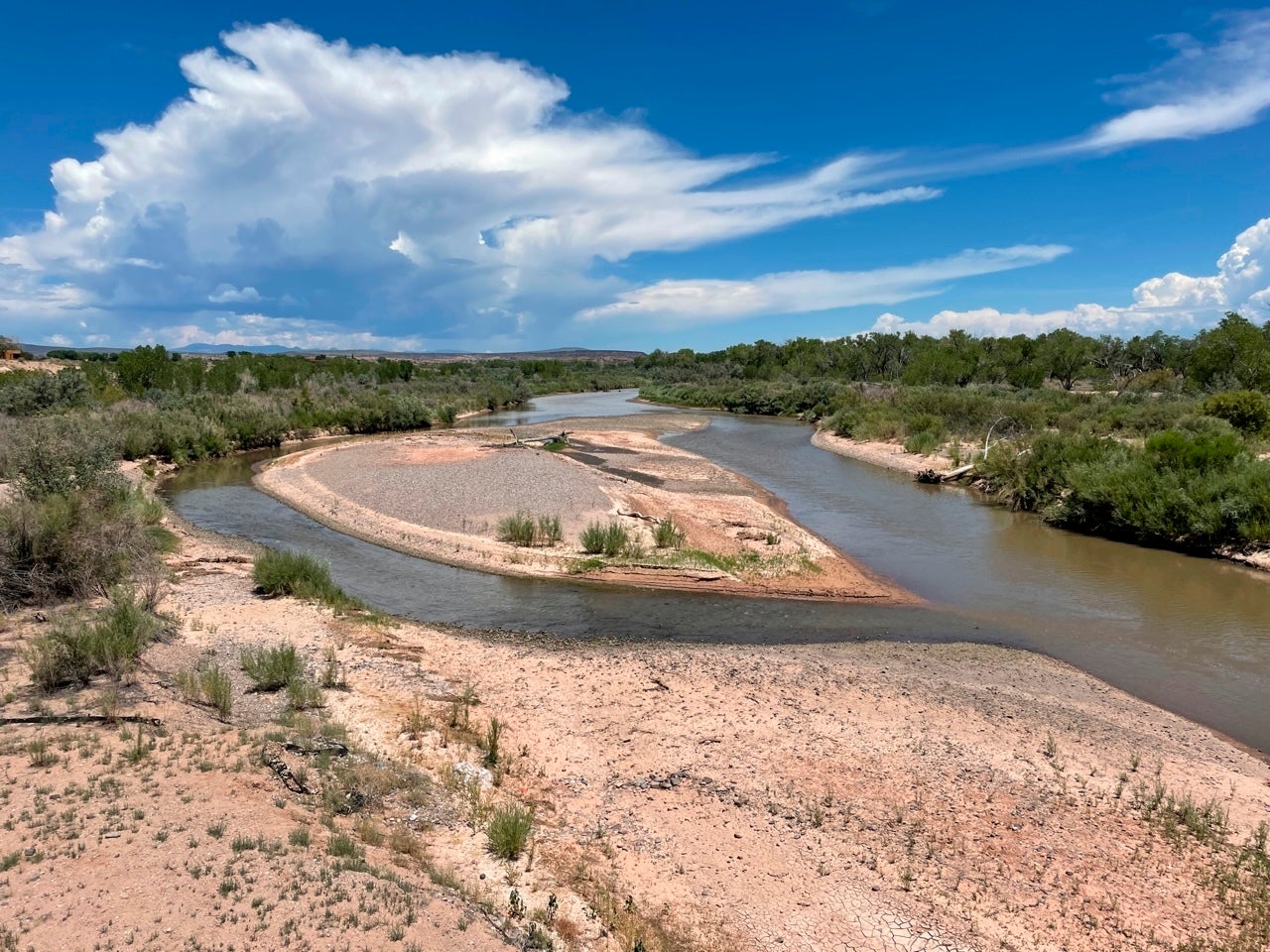Reduced to a trickle, river managers brace for more drying
With hotter and drier weather plaguing New Mexico, water managers are warning that more stretches of one of North America’s longest rivers will be drying up in the coming days

Your support helps us to tell the story
From reproductive rights to climate change to Big Tech, The Independent is on the ground when the story is developing. Whether it's investigating the financials of Elon Musk's pro-Trump PAC or producing our latest documentary, 'The A Word', which shines a light on the American women fighting for reproductive rights, we know how important it is to parse out the facts from the messaging.
At such a critical moment in US history, we need reporters on the ground. Your donation allows us to keep sending journalists to speak to both sides of the story.
The Independent is trusted by Americans across the entire political spectrum. And unlike many other quality news outlets, we choose not to lock Americans out of our reporting and analysis with paywalls. We believe quality journalism should be available to everyone, paid for by those who can afford it.
Your support makes all the difference.Triple digit temperatures and a fickle monsoon season have combined with decades of persistent drought to put one of North America's longest rivers in its most precarious situation yet.
Islands of sand and gravel and patches of cracked mud are taking over where the Rio Grande once flowed, a scene not unlike other spots around the western U.S. where rivers and reservoirs have been shrinking amid hot, dry weather brought on by climate change and continued demand.
Local and federal water managers on Thursday warned that more stretches of the beleaguered Rio Grande will be drying up in the coming days in the Albuquerque area, leaving endangered silvery minnows stranded in whatever puddles remain.
While the threat of having the river dry this far north has been present each of the last few summers due to ongoing drought, officials with the Bureau of Reclamation and one of the largest irrigation districts on the river said this could be the year that residents in New Mexico's most populated region get to witness the effects of climate change on a grander scale.
It’s not uncommon to have parts of the Rio Grande go dry in its more southern reaches, but not in Albuquerque.
Like a monument, the river courses through the city, flanked by a forest of cottonwood and willow trees. It's one of the few ribbons of green to cut through the arid state, providing water for crops and communities.
“This is almost the sole source of water in the central part of New Mexico and we’re not trying to save it just for the fish,” said Andy Dean, a federal biologist. “It’s our job as the Fish and Wildlife Service to prevent the extinction of this animal, but this water is also for everybody in the valley. We’re trying to save it for everybody and if the fish is that piece that helps us do that, then that’s what we have to use."
The Bureau of Reclamation will be releasing what little supplemental water it has left in upstream reservoirs along the Rio Grande. Over the last 20 years, the agency has leased about 700,000 acre-feet — or 228 billion gallons — of water to supplement flows through the middle Rio Grande for endangered and threatened species.
Biologists aren’t sure this latest release will be enough to make a difference for the endangered minnow.
Crews already have been rescuing stranded minnows in the San Acacia and Isleta areas and will continue as the river dries. So far, they've been lucky to net about 50 fish a day, but Dean said those numbers are just a fraction of what has been rescued in past years.
“It doesn’t look like there’s a lot of minnows out there currently. Our population monitoring is reflecting that as well,” he said.
Dean said scooping up minnows in Albuquerque will be new territory for the crew as they have never had to do such work that far north.
With a series of dams and interstate water-sharing agreements governing the Rio Grande's flows, local, state and federal officials have been successful in previous years reaching agreements that allow for extra water to be leased and released so that flows could be boosted in times of need.
This year is different. New Mexico has been unable to store any extra runoff in upstream reservoirs because it is owes Texas water as part of an interstate compact. With the outstanding debt and without any water in the bank, New Mexico has nothing other than the hope of rain to recharge the system during the monsoon season.
Jason Casuga, the chief engineer for the Middle Rio Grande Conservancy District, which serves farmers throughout the Middle Rio Grande Valley, said it should serve as a wake- up call for the public and water management agencies.
“There’s a lot of infrastructure on this river that was built for a purpose and that was during a period of time when water was plentiful," he said. "I’m hoping that’s the silver lining that comes out of this, that people start re-envisioning the way we can use that existing infrastructure.”
Congressional legislation would be needed in some cases. In others, it would require agreements with federal water and wildlife agencies that would allow for more flexibility.
“The longer this drought stays around, I think people are going to recognize we’ve got to find balance,” Casuga said.
The irrigation district and state officials have been pushing more farmers to participate in voluntary fallowing programs, in which they leave their fields unplanted for a season in order to save water and increase what flows across the border to Texas as a way to chip away at the debt.